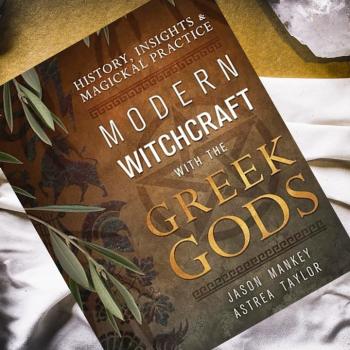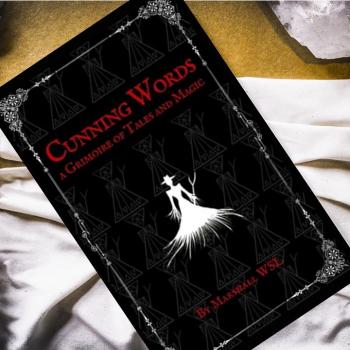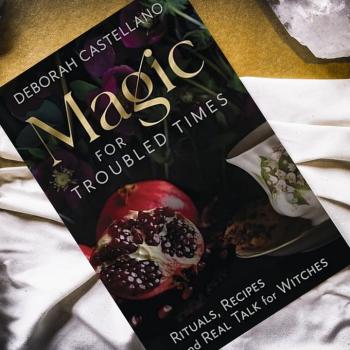The dark moon on December 11th brought with it the urge to slow down and regroup. I feel this way at each dark moon, but it typically passes in a few days giving way to burst of faster paced energy. However, at this time of year, that dark moon stillness seems to last a bit longer, perhaps because the Longest Night is also approaching. In my experience, the dark stillness of this time is an invitation to engage with spiritual and magical forces by listening more intently. Sometimes in the great stampeding rush of life, I forget to listen well. As a psychologist in training, I listen for a living; it’s what I do and a central part of who I am. It only makes sense then that listening be a critical part of my spiritual process as well. So, it causes me no small amount of distress when I fail to listen well. Anyone can hear other people or the spirits, but listening well, meaning listening actively, requires focused effort.

Professional listeners such as therapists and counselors conceptualize the efforts of active listening in terms of several common attending behaviors organized into a basic listening sequence. These ideas have been very well-codified and well-articulated by Allen E. Ivey and his colleagues (2011). In a nutshell, actions and mannerisms including eye contact, body language, vocal tone and speech rate, physical space, and time, collectively termed attending behaviors, signal that you are present and engaged in the here and now with another individual (i.e., they have your respect and full attention). These attending behaviors are employed in conjunction with questioning, encouraging, paraphrasing, reflecting, and summarizing – the basic listening sequence – in order to draw out what the other person is trying to communicate. Communicating with spirits can utilize a similar approach.
Active listening can and should be utilized regularly but often times there is so much background noise in our lives that it’s hard to apply this core skill with one another, let alone with the spirits. This is where the dark moon comes in. I find that the stillness that comes with the dark moon provides a break in the metaphysical background noise, allowing us to listen more carefully and actively to what the spirits may have to say. In the dark stillness we can hone in on one voice and establish a new conversation or return to an existing one. If networking with the spirits were a cocktail party, the dark moon is the natural lull where you might hear 3 conversations around you instead of 30. Sure, you can still actively listen in the hustle and bustle of the party, but it’s much easier during the lull, and potentially much deeper.
To get the most out of active listening, come to the meeting prepared. Review your magical notes and spiritual journals in advance. Take stock of what you know and understand and where there are still gaps. Based on your efforts, draft questions, but be ready if the spirit decides to take the conversation in another direction. Also be ready if the spirit has questions for you. The more prepared you are before striking up a conversation, the more you will get out of the interaction and the stronger the bonds formed between you and the spirit may become.

Now that you are prepared, it’s fairly easy to translate the attending behaviors you would use when actively listening to a person – eye contact, body language, vocal tone and speech rate, physical space, and time – into a spiritual context for use in spirit communication. Eye contact with the spirit you are connecting with means making visual contact where possible. For me, this often means having an altar or symbol as a visual focal point so that I may more easily shift my attention. Body language is also important to establishing a connection. I often employ gestures that are meaningful to the spirit and also allow my attention to shift away from peripheral tasks. For example, I may raise my hands to the sky or touch the ground or focus on sitting comfortably in a posture of receptivity. My vocal tone and speech rate also change in order to show that my attention is on the spirit and not on something else. Slow, careful speech that names the spirit and states the purpose of the contact is very helpful. I find that the more focused and mindful the address, the quicker and clearer the reply. In terms of physical space, I bring the place of contact into alignment with the spirit. That might mean burning special incense or otherwise altering the space. Time is also a vital component of attending to the spirit you are communicating with. In my work I try to honor sacred times as much as possible. I also choose times when I am less likely to be disturbed by either internal or external stimuli. All of the attending behaviors have the added benefit of not only shifting your attention to the spirit you are trying to reach, but also helping to shift your consciousness so that your awareness can more readily perceive the presence of that spirit.
The above reflects a slightly more formal way of applying the attending behaviors, but sometimes we seek out and/or encounter spirits in anything but formal circumstances. In a more informal setting, eye contact might mean holding a relevant image in mind. Body language might mean stopping what you were doing and sitting still. Vocal tone and speech rate might be more about humming or simply moving into silence rather than a traditional hymn followed by a long chant. The physical space might be limited to your physical person, and attending to the spirit might look like adjusting your sacred jewelry or scratching their sacred symbol into your winter-dry skin while you sit warded on the city bus. Time, the tricky one, may mean the magical extension of a single moment. It only takes a moment to reach out with your spirit and meet another spirit half-way. Making sense of that moment? Well, that can take longer.
Messages come at varying frequencies and levels of clarity. Even with the attending behaviors allowing us to be as present and engaged as possible, we still need time to assemble the message, ask clarifying questions, and use the answers to continue building our divine relationships, spiritual practices, and magical knowledge. The time of and surrounding the dark moon provides a good opportunity to touch base with a spirit and dig deep. Digging deep (i.e. getting active with our listening) involves the basic listening sequence: questioning, encouraging, paraphrasing, reflecting, and summarizing.
The basic listening sequence with human folk is straightforward, but it can get interesting when applied to spirits because it can take more time, effort, and troubleshooting. Questioning spirits often involves a strong sense of intuition, well-crafted questions given in order (though they may not be answered in order), and a typically a divination tool or three. Questioning, in and of itself, is a process and it requires vast amounts of attention and attending in order to keep the connection strong and all of the information straight.

Woven into the questioning process is encouraging. As answers are given by the spirit and you organize the information, it helps to offer the spirits encouragement to stay engaged with you and keep sharing their insights, and even help with the information ordering process. For me, this means offerings. It can be good incense, sometimes one that I have made myself as a devotional act, or libations of a favorite alcoholic beverage. A spirit may also be encouraged to continue sharing knowledge and wisdom, or other kinds of important messages, by making in the moment connections to previously provided bits of information. Nothing says I hear you like relating current information to past information and then posing a related question that keeps the conversation going.
Paraphrasing ties in nicely with the previous two aspects of the basic listening sequence. Speak what you think the spirit is saying back to them in your own words. This gives the spirit an opportunity to confirm the message, clarify it, or modify it. We do this with people all of the time. It is important to do it when communicating with spirits too. It might be tempting to stop here in the basic listening sequence but it’s important to keep going.
Reflecting back the emotional aspect of the message is critical. If there is emotional content at all, it is important to reflect that back and check it out with the spirit. For example, at varying points in my spiritual life, Hekate has told me that I could do better, because it’s Hekate. Sometimes she says this as a warm, friendly call to greater personal growth and development. Other times she says this as an indictment and as a demand to level up out of necessity. Reflecting the emotional content of the message is important because you wouldn’t want to take the message one way when it is meant in a completely different way. Checking out the emotional content with the spirit giving the message is just as important as checking out the information itself.

Summarizing is the final step in the basic listening sequence. It’s all magic but this is where some real magical moving and shaking happens because it allows the listener to bring together content and themes from across the whole conversation and check them out with the spirit. This includes the current conversation as well as prior conversations if desired. Summarizing is about synthesis for the purpose of deepening understanding. The listener has a chance here to bring not only messages and concepts together, but also two or more beings.
At the time of the dark moon, in the stillness of that moment the witch can readily whisper between the worlds, the spirits can readily whisper back, and at the end of the conversation the listening witch can bring together myriad thoughts, feelings, concepts, and messages weaving them into a whole that makes (some kind of hopefully useful) sense. On top of that, the bonds between the witch and the spirits have been fortified by the active listening process. For me, the dark still times are the best times for this sort of synthesizing and connecting though it may be time consuming and require both focus and effort. We witches have to listen actively if we want to claim that we communicate with spirits. Shouting into the void from within a perfectly cast circle is nice, but it doesn’t mean much if we aren’t actively listening to what’s screeched back at us and building the bonds between the worlds along the way.
Reference
Ivey, A. E., D’Andrea, M. J., & Ivey, M. B. (2011). Theories of Counseling and Psychotherapy: A Multicultural Perspective: A Multicultural Perspective. Sage.

Patheos Pagan on Facebook.

the Agora on Facebook
Wayfaring Woman is published bi-monthly on Sundays here on the Agora. You can subscribe by RSS or via e-mail.
Please use the links to the right to keep on top of activities here on the Agora as well as across the entire Patheos Pagan channel.













